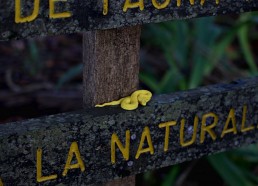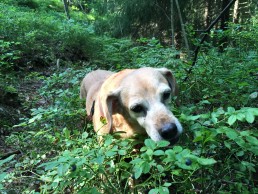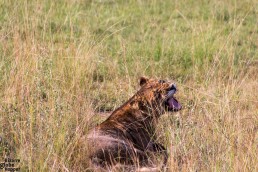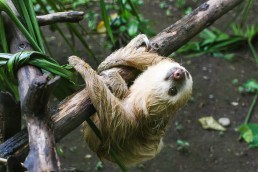Did you know that while traveling, you could also help out scientists in various ways? If you haven’t heard about an organisation called Adventurers and Scientists for Conservation (ASC), it’s about time you do. I did some co-operation with them during my visit to Costa Rica in March 2014.
I recently participated in a project which is gathering data of Central American snakes to protect these creatures as well as raising awareness of the local people about these slithery friends. This project has currently been expanded for collecting data from all over South America, not just from Panama, even though it says so on the site. Taking part in this project was exciting.
The Gear Needed on the Field
Different projects require a different kind of gear, but there is some basic equipment that you should have. Those are a good GPS system to locate your exact coordinates, a waterproof notebook and a pencil to write down your discoveries and some reliable (preferably also waterproof) clothes and sturdy shoes. Every project has its special needs, so consult your project files (which you’ll get from ASC) what additional, specific items are required.
Searching for Subjects in Cahuita
Even though Costa Rica has extremely broad biodiversity, it isn’t easy to find the animals. There are so much of them hiding in the vast vegetation that you need a trained and keen eye to spot them while walking in the rainforests. It will take you some days to get some practice in spotting them among the trees and various plants, and a good guide can help you out on your first days. But be patient and after a little while, you’ll start spotting them by yourself. When that happens, it’s very rewarding.
We spent many days in Cahuita, which is one of the more remote national parks of Costa Rica. It’s not visited by as many tourists as the many other parks, and this is one of the reasons why we chose to visit here. The few people, the more opportunities to see wildlife and to explore around in peace. We had already visited the park one time before spotting anything more than little lizards or the occasional monkeys. When we started to see also sloths hanging on the tree branches several meters above ground level, among other wildlife, we were excited. But the snakes still stayed hidden from my cameras’ lens.
When out exploring new sites you have to keep in mind that perhaps you’re not going to get any data for the project you’re currently participating, but don’t let that ruin your day. The people back at ASC are very understanding about that sometimes you’re just unable to collect data. You just have to go by the terms of the current circumstances in every situation and location. A photographing project is easy to participate because most of the times you probably have some camera with you. So when an opportunity comes up, you can quickly take advantage of it and snap the pictures.

Finding the Snakes in Cahuita National Park
Finally on our second day hiking around in the National Park of Cahuita we encountered a snake. Though it was very close that we would have missed it. The snake was tiny, and it was sitting on a signpost not very far away from the entrance. We noticed it because it was bright yellow in color. When getting closer to my subject to get some good shots I thought about the instructions given in the information sheet of this project, of how to safely photograph the snakes.
Taking good care to obey them I got many good shots of this little, yellow and slithery fellow. I wrote carefully down the required information about the GPS coordinates, surroundings and weather conditions of the spotting site. While doing it, I felt very excited to encounter a snake finally in the rainforest and about the fact that I’d finally have something to send back to ASC to literally help out this science project! I would have loved to be able to catch more individuals but this time, they stayed hidden. Every little piece of information is better than nothing.
If this project is still going on in July when we’re heading for a month to the neighbouring country, Nicaragua, I will continue photographing snakes and gathering data for this project. Protecting the nature is a collective interest for us all. And always remember, that in preserving our beautiful globe there is no act too minor worth doing. I understood this when we were visiting the Cahuita National Park. All help counts!
You May Also Like to Read:
Picking Berries in Central Park, Helsinki
Wander with us through the wild forest in the middle of Helsinki in the hunt of Finnish superfoods like bilberries and nettle.
Chasing Lions at Queen Elizabeth National Park in Uganda
Track tree-climbing lions, take a boat safari in Kazinga Channel or visit bat cave in the beautiful Queen Elizabeth National Park in Uganda.
Visiting a Wildlife Rescue Center in Costa Rica
Visiting a wildlife rescue center when you're in Costa Rica is a must-do. But don't forget to choose responsibly the place you visit. There is a good selection of non-profit places where the welfare of animals comes first.




